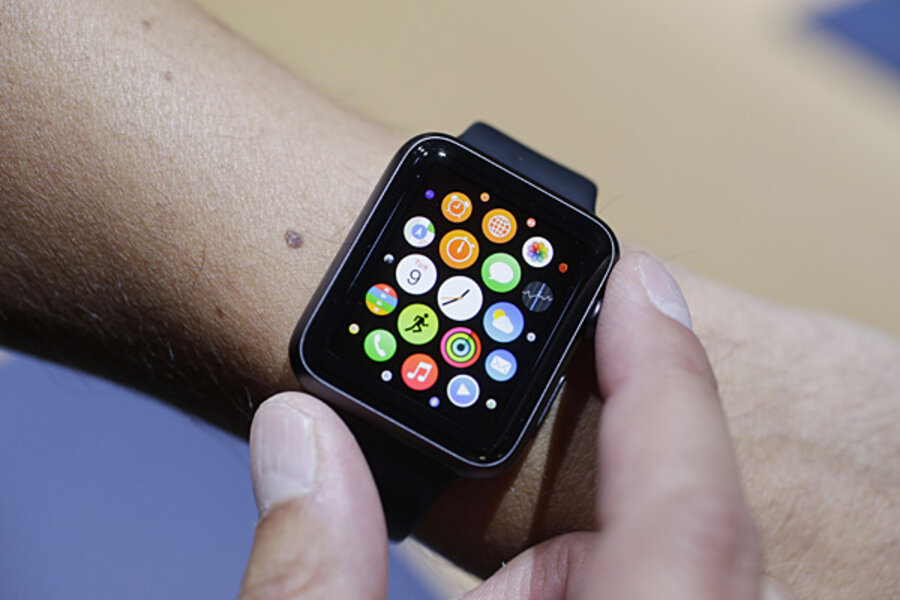Everything we know, or think we know, about the Apple Watch
Loading...
The wait is almost over. Apple will finally unveil the highly anticipated Apple Watch on Monday, March 9. The world got its first look at the smart watch back in September, but Apple’s “Spring Forward” event is likely to focus on the Apple Watch and to reveal the final details of what people can expect when it releases in April.
Here, we've compiled a list of everything we know, or think we know, about the Apple Watch:
Accessory to the iPhone
Apple has made it extremely clear that the Apple Watch will rely on the iPhone to be fully utilized. The tech giant has been pushing the smart watch as a high-end accessory, marketing it at Paris Fashion Week and featuring it in magazines such as Vogue and Self. Apple hired multiple people in the fashion industry to help design the watch, including Australian designer Marc Newson.
Looks aside, the Apple Watch is pretty useless unless you own an iPhone 5 or later model, running the latest version of iOS 8 – which means where the Apple Watch goes, the iPhone must follow.
If you meet all of the requirements for Internet connectivity, the smart watch has quite a few (suspected) features:
- Turn on its screen automatically when you raise your wrist
- Distinguish between a touch on the screen and a longer press on the screen
- Send “tap” notifications for alerts
- Receive calls, texts, e-mails, and social media updates
- Access Siri
- Work with Apple Pay (though the mobile pay system still has its kinks)
- Track steps and other fitness data with the built-in heart rate monitor and accelerometer
- Allow users to send their heartbeat to others
- Draw and send doodles to friends
Differences between models
There will be at least three models for people to choose from:
Apple Watch Sport will have an aluminum frame in silver or black and synthetic rubber strap in multiple colors. This model will likely have the starting price of $349.
Apple Watch will have a stainless steal frame in silver or black and come with a choice of a leather band, a link bracelet, a Milanese loop, or the synthetic rubber band. There have been estimates that the starting price will be anywhere from $700 to $1,000.
Apple Watch Edition is the luxury version of the smart watch. It will feature an 18-karat gold or rose gold frame and will be interchangeable with all of the Apple band options. This version is predicted to be Apple’s most expensive product ever. Price speculation is all over the place, with predictions ranging from $5,000 to $20,000, depending on the size and accessories chosen.
Some models will be available in two sizes: a square 1.5-inch face or a larger 1.7-inch screen. The Apple Watch and Apple Watch Edition will feature screens made of Sapphire Crystal, which is used to make other luxury watches, while the Sport’s screen will be made a of Ion-X glass, which is reportedly lighter.
All three models operate using touchscreens and will only have two buttons. One button, the “Digital Crown,” acts as a home button and allow users scroll though lists and apps, zoom in on maps, and more. The other button brings up a friends menu to quickly communicate with others.
The reported battery life of the Apple Watch has fallen extremely short of expectations. While Apple hoped the watch’s battery would last 19 hours with a mixture of active and passive use and only need to be charged at night, new reports say that, with heavy use, the watch will only run for 2.5 to 4 hours. Apple has severely reined in certain features, such as apps, and designed the smart watch’s screen to be on as little as possible to help save the watch from dying too quickly.
What the watch lost
Battery life has been the biggest design hurdle, according to 9to5mac. Since the battery reportedly drains so quickly, developers have also been given strict guidelines to follow, including denying apps access to the watch’s sensors and limiting app usage to 10 seconds. Even with the limits to applications, Apple has been in highly secretive meetings with the likes of Instagram, Twitter, Pinterest, BMW, Tesla, and many more, signaling there will still be plenty of applications for users to choose from (even if it is for only 10 seconds at a time).
Some of the biggest cuts to the Apple Watch were the health monitoring components. While Apple hoped to create a “state-of the-art health-monitoring device,” the company ran into roadblocks in the consistency of certain features and from the government. It ultimately chose to drop certain aspects of monitoring heart activity, as well as systems that measured stress levels, blood pressure, and blood-oxygen levels, according to several outlets.
It has also been reported that a GPS tracking system got the axe as well.






